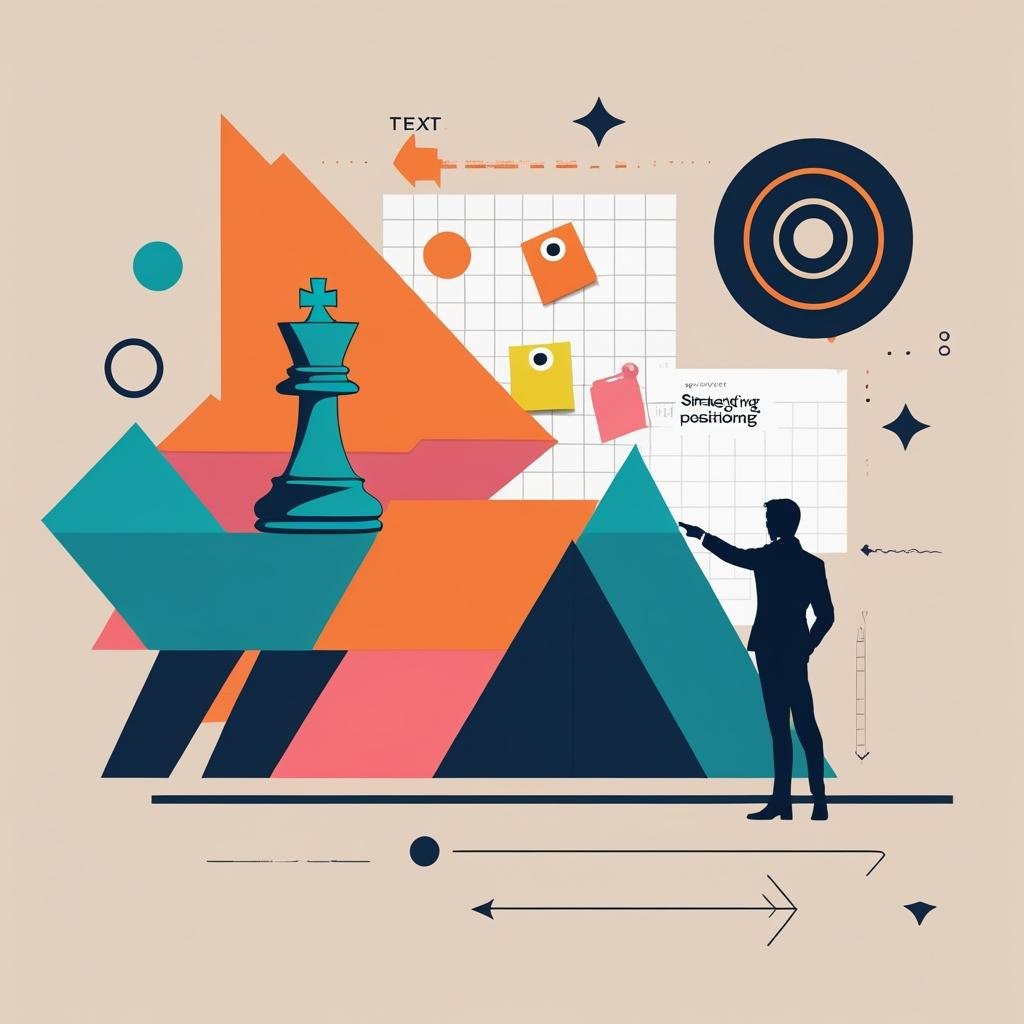Brand Positioning Examples to Refine Your Branding Strategy

Have you ever stopped to think about why some brands just stick in your mind? Why does a swoosh make you think of Nike, or why does the phrase “Think Different” instantly bring Apple to mind? That’s the power of brand positioning. It’s the art of carving out a unique space in your audience’s mind, making your brand the go-to choice for what you offer. But how do brands do this so effectively, and what can you learn from them to shape your strategy?
Let’s dive into the world of brand positioning, explore some real-world examples, and ask ourselves: What makes these brands stand out, and how can I apply that to my own business? By the end, you’ll have a clearer idea of how to position your brand to connect deeply with your audience.
What is Brand Positioning, and Why Should You Care?

Before we jump into examples, let’s clarify: what exactly is brand positioning? It’s about defining who you are as a brand, what you stand for, and why you’re different from the competition. It’s not just about your product or service—it’s about the feeling you create in your customers’ minds. Why do you think some brands feel like they “get” you, while others just blend into the background?
A strong brand position answers three key questions:
- Who are you for? Who’s your target audience?
- What problem do you solve? How do you make their lives better?
- Why you over the competition? What makes you unique?
Research shows that brands with clear positioning can increase customer loyalty by up to 20% and command premium pricing. But how do you craft a position that resonates? Let’s explore some standout examples and ask ourselves what makes them work.
Key Brand Positioning Examples to Inspire You

Let’s look at five iconic brands that have mastered brand positioning. As we go through each, think about this: What can I borrow from their approach to make my brand unforgettable?
1. Apple: Innovation and Simplicity
What comes to mind when you think of Apple? Sleek designs, cutting-edge tech, and a sense of being part of something bigger? Apple’s brand positioning is built around innovation and simplicity. Their tagline, “Think Different,” speaks to creative, forward-thinking individuals who want technology that’s intuitive and stylish.
- How They Do It: Apple focuses on user experience, minimalist design, and storytelling that emphasises individuality. Their ads don’t just sell products—they sell a lifestyle. For example, their “Shot on iPhone” campaign showcases user-generated content to highlight creativity and accessibility.
- Key Takeaway: Apple positions itself as a premium, aspirational brand that’s about empowering creativity. What’s a core value your brand could rally around to inspire your audience?
- Question to Ponder: How could you simplify your product or message to make it instantly relatable, like Apple does?
2. Nike: Empowerment and Performance
Nike’s swoosh is more than a logo—it’s a symbol of motivation. Their positioning revolves around empowerment and athletic performance, with the tagline “Just Do It” inspiring everyone from professional athletes to weekend joggers. Why do you think this message resonates with such a wide audience?
- How They Do It: Nike employs powerful storytelling, featuring athletes overcoming challenges, to emotionally connect with their audience. Their campaigns often highlight diversity and perseverance, as seen in their “Dream Crazier” ad, which celebrates women in sports.
- Key Takeaway: Nike doesn’t just sell shoes; they sell the idea of pushing your limits. How could you tap into an emotion or aspiration that drives your customers?
- Question to Ponder: What’s a universal feeling or goal your brand could champion?
3. Tesla: Sustainability and Futurism
Tesla isn’t just a car company—it’s a vision for the future. Their brand positioning centers on sustainability and innovation, appealing to eco-conscious consumers and tech enthusiasts. Why do you think Tesla has such a cult-like following?
- How They Do It: Tesla markets itself as a leader in electric vehicles and renewable energy, with bold promises like autonomous driving and solar-powered solutions. Elon Musk’s personal brand amplifies this, creating buzz through social media platforms like X. Their Model S launch, for example, emphasised performance and eco-friendliness, redefining what a “green” car could be.
- Key Takeaway: Tesla positions itself as a forward-thinking disruptor. How could you position your brand as a game-changer in your industry?
- Question to Ponder: What bold vision could your brand stand for to attract passionate followers?
4. Patagonia: Environmental Responsibility
Patagonia’s brand positioning is all about environmental responsibility and authenticity. They appeal to outdoor enthusiasts who care about the planet, with their mission statement: “We’re in business to save our home planet.” Why does this feel so genuine compared to other brands’ eco-claims?
- How They Do It: Patagonia walks the talk with sustainable products, transparent supply chains, and campaigns like “Don’t Buy This Jacket,” which encouraged customers to buy less and repair more. They also donate 1% of sales to environmental causes.
- Key Takeaway: Patagonia builds trust by aligning actions with values. How could your brand demonstrate its values in a way that feels authentic?
- Question to Ponder: What cause or value could your brand champion to build deeper connections?
5. Dollar Shave Club: Affordability and Humour
Dollar Shave Club disrupted the grooming industry with a positioning strategy built on affordability and humour. Their tagline, “Shave Time. Shave Money,” is catchy and clear. Why do you think humour worked so well for them?
- How They Do It: Their viral launch video in 2012 was witty and relatable, poking fun at overpriced razors while highlighting their subscription model. They used social media to amplify this cheeky tone, building a loyal community.
- Key Takeaway: Dollar Shave Club made a mundane product exciting through personality. How could you inject personality into your brand’s messaging?
How to Craft Your Own Brand Positioning Strategy
.webp)
Now that we’ve seen these examples, let’s think about how you can create your own brand positioning. What steps would you take to make your brand unforgettable? Here’s a step-by-step guide to help you refine your strategy, with questions to spark your thinking.
Step 1: Define Your Target Audience
Who are you trying to reach? Your brand positioning should speak directly to your ideal customers. Are they young professionals, eco-conscious parents, or tech-savvy innovators? For example, Nike targets athletes and active individuals, while Patagonia focuses on environmentally conscious adventurers.
- How to Do It: Create buyer personas using surveys, customer feedback, or social media analytics. Tools like Google Analytics or HubSpot can help.
- Question to Ask: Who’s your dream customer, and what do they care about most?
Step 2: Identify Your Unique Value Proposition (UVP)
What makes your brand different? Your UVP is the core of your positioning—it’s the reason customers choose you over competitors. Apple’s UVP is simplicity and innovation; Dollar Shave Club’s is affordability with a side of humor.
- How to Do It: Conduct a competitive analysis (as we discussed in a previous blog) to identify market gaps. What can you offer that others don’t?
- Question to Ask: What’s one thing your brand does better than anyone else?
Step 3: Analyse Your Competitors
How do your competitors position themselves? Understanding their strengths and weaknesses helps you find your niche. For instance, Tesla stands out by focusing on sustainability, while traditional car brands emphasise reliability or luxury.
- How to Do It: Use tools like SEMrush or Ahrefs to analyse competitors’ messaging, keywords, and social media presence. Check platforms like X for real-time discussions about competitors.
- Question to Ask: Where are your competitors falling short, and how can you fill that gap?
Step 4: Craft Your Positioning Statement
What’s the one sentence that sums up your brand? A positioning statement defines your audience, your offering, and what sets you apart. Here’s a template:
“For [target audience], [brand name] is the [product/service] that [key benefit] because [unique reason].”
Example: For outdoor enthusiasts, Patagonia is the apparel brand that delivers sustainable, high-quality gear because we prioritise the planet’s health.
- How to Do It: Brainstorm with your team, test your statement with customers, and refine it to be clear and memorable.
- Question to Ask: Does your positioning statement feel authentic and compelling?
Step 5: Bring Your Positioning to Life
How will you show the world who you are? Your positioning should shine through in every touchpoint—your website, social media, ads, and customer interactions. Nike’s “Just Do It” is woven into their ads, packaging, and even athlete sponsorships.
- How to Do It: Create a brand style guide for consistent messaging, visuals, and tone. Use storytelling in your marketing, like Apple’s emotional ads or Patagonia’s environmental campaigns.
- Question to Ask: How can you make your brand’s personality consistent across all channels?
Step 6: Test and Refine
How do you know if your positioning is working? Test it with your audience and track results. Are you seeing higher engagement, more sales, or better brand recall? Dollar Shave Club tweaked their messaging based on customer feedback to stay relevant.
- How to Do It: Use A/B testing for ads, monitor social media sentiment on platforms like X, and collect customer feedback through surveys.
- Question to Ask: What metrics will tell you your positioning is resonating?
Real-World Applications: Putting Positioning into Action

Let’s make this practical. How might different businesses use brand positioning? Here are three scenarios:
- Small Business Owner: A local bakery could position itself as “the cozy, community-driven bakery that uses organic, local ingredients” to stand out from chain stores. They could emphasise this through farm-to-table stories on Instagram.
- E-commerce Brand: An online fitness gear shop might position itself as “the affordable, high-quality choice for home workouts”, using influencer partnerships and budget-friendly bundles to compete with big brands.
- Tech Startup: A SaaS company could position itself as “the intuitive, all-in-one platform for small businesses”, highlighting ease of use and customer support to differentiate from complex competitors.
What type of business are you running, and how could you position it to stand out?
Common Mistakes to Avoid

What could derail your brand positioning? Here are some pitfalls to watch for:
- Being Too Generic: Why might a vague position like “high quality” fail to resonate?
- Ignoring Your Audience: How could misjudging your customers’ needs hurt your brand?
- Inconsistency: Why is it important to keep your messaging consistent across platforms?
Tools to Help You Build Your Positioning

What tools can make this process easier? Here are some to consider:
- Market Research: SEMrush, Ahrefs, or Google Trends for competitor insights.
- Customer Feedback: SurveyMonkey or Typeform to understand your audience.
- Visual Branding: Canva or Adobe Express for consistent visuals.
- Analytics: Google Analytics or social media insights to track performance.
How could one of these tools help you refine your brand positioning?
Wrapping Up
Founder & CEO @ Hubxpert. My goal is to make every company using HubSpot succeed in their marketing organisation and automation.

Ratul Rahman
Table of Contents:
Subscribe to our newsletter

HubSpot: Elevating Bangladeshi Consultancies Beyond Excel
Our 2024 Beginner's Guide to Revenue Attribution Models explains key models & helps you choose the right one to optimize campaigns & boost ROI.

Why Bangladeshi Consultancies Lose 30% of Leads—and How to Fix It
Our 2024 Beginner's Guide to Revenue Attribution Models explains key models & helps you choose the right one to optimize campaigns & boost ROI.

Bangladeshi Study-Abroad Marketing: Converting Social Media into Leads
Our 2024 Beginner's Guide to Revenue Attribution Models explains key models & helps you choose the right one to optimize campaigns & boost ROI.

Best CRM for Education Businesses in Bangladesh
Our 2024 Beginner's Guide to Revenue Attribution Models explains key models & helps you choose the right one to optimize campaigns & boost ROI.

Modern Sales Systems That Actually Convert for Bangladeshi Consultancies
Our 2024 Beginner's Guide to Revenue Attribution Models explains key models & helps you choose the right one to optimize campaigns & boost ROI.

What I Learned Helping Healthcare Businesses Fix Their Sales & Marketing Process
Discover how connected CRM systems like HubSpot can transform healthcare sales and marketing processes, improving patient engagement, reducing no-shows, and streamlining workflows.
-

HubSpot: Elevating Bangladeshi Consultancies Beyond Excel
Discover how businesses are using HubSpot to streamline marketing efforts, boost lead generation, and drive sustainable growth through data-driven strategies.
Marketing -

Why Bangladeshi Consultancies Lose 30% of Leads—and How to Fix It
Discover how businesses are using HubSpot to streamline marketing efforts, boost lead generation, and drive sustainable growth through data-driven strategies.
Marketing -

Bangladeshi Study-Abroad Marketing: Converting Social Media into Leads
Discover how businesses are using HubSpot to streamline marketing efforts, boost lead generation, and drive sustainable growth through data-driven strategies.
Marketing -

Best CRM for Education Businesses in Bangladesh
Discover how businesses are using HubSpot to streamline marketing efforts, boost lead generation, and drive sustainable growth through data-driven strategies.
Marketing -

Modern Sales Systems That Actually Convert for Bangladeshi Consultancies
Discover how businesses are using HubSpot to streamline marketing efforts, boost lead generation, and drive sustainable growth through data-driven strategies.
Marketing -

What I Learned Helping Healthcare Businesses Fix Their Sales & Marketing Process
Discover how businesses are using HubSpot to streamline marketing efforts, boost lead generation, and drive sustainable growth through data-driven strategies.
General




